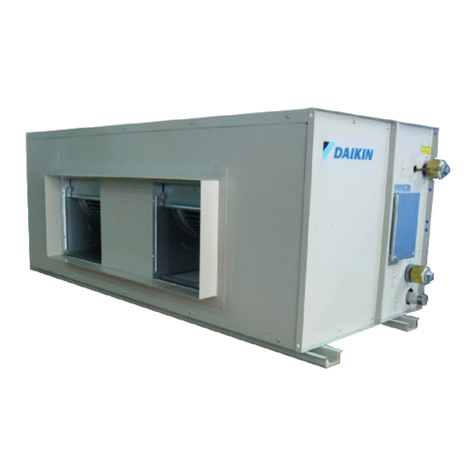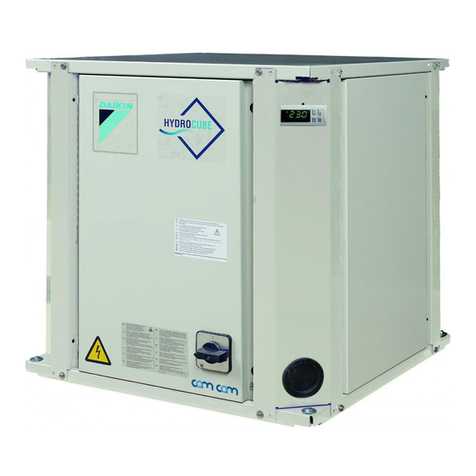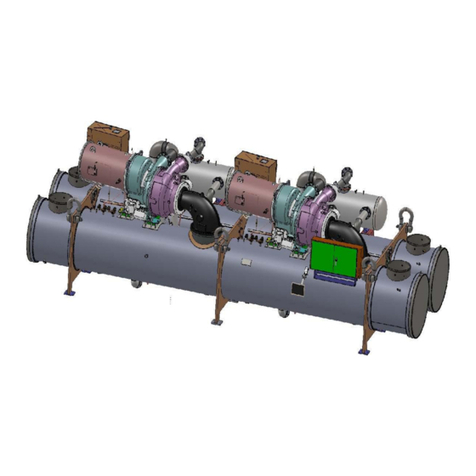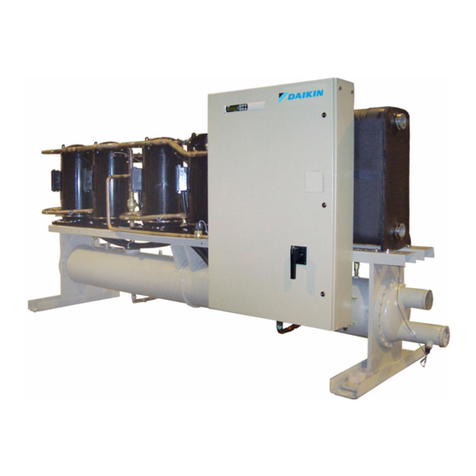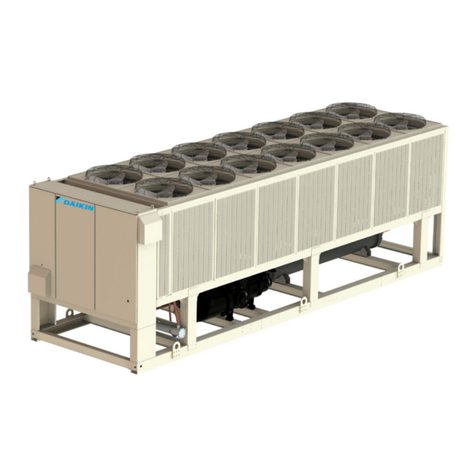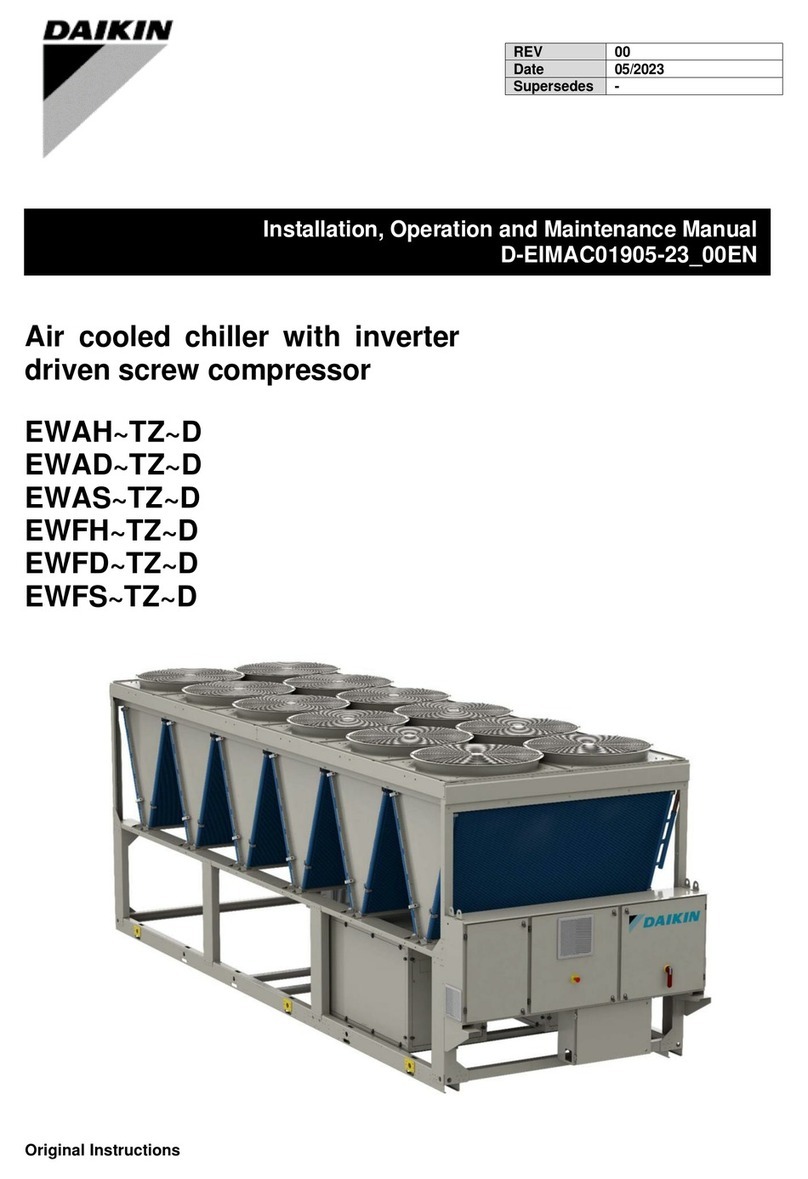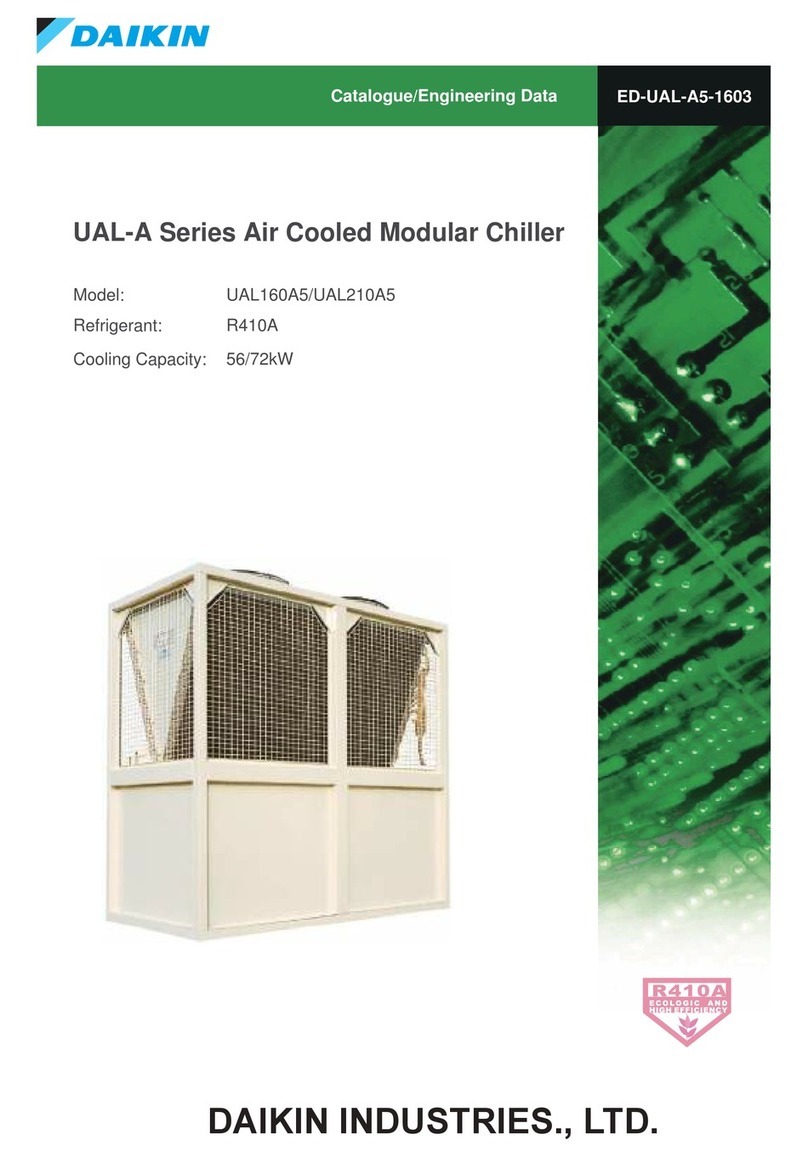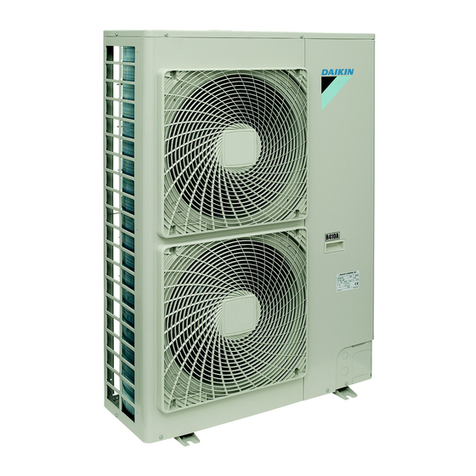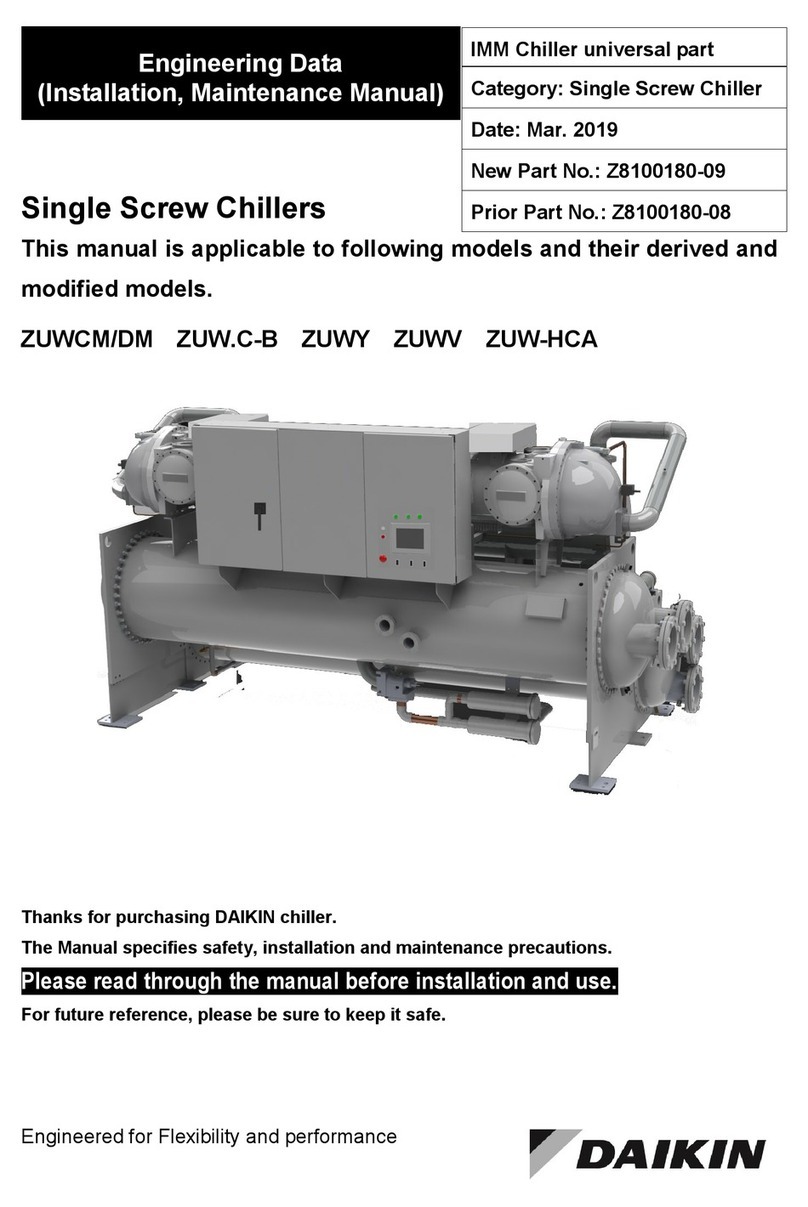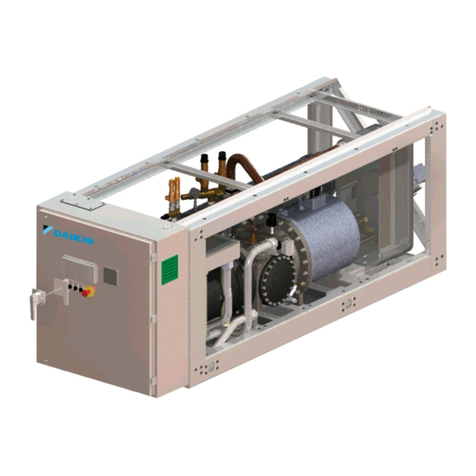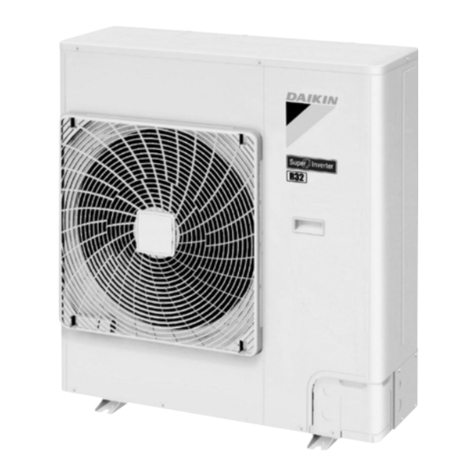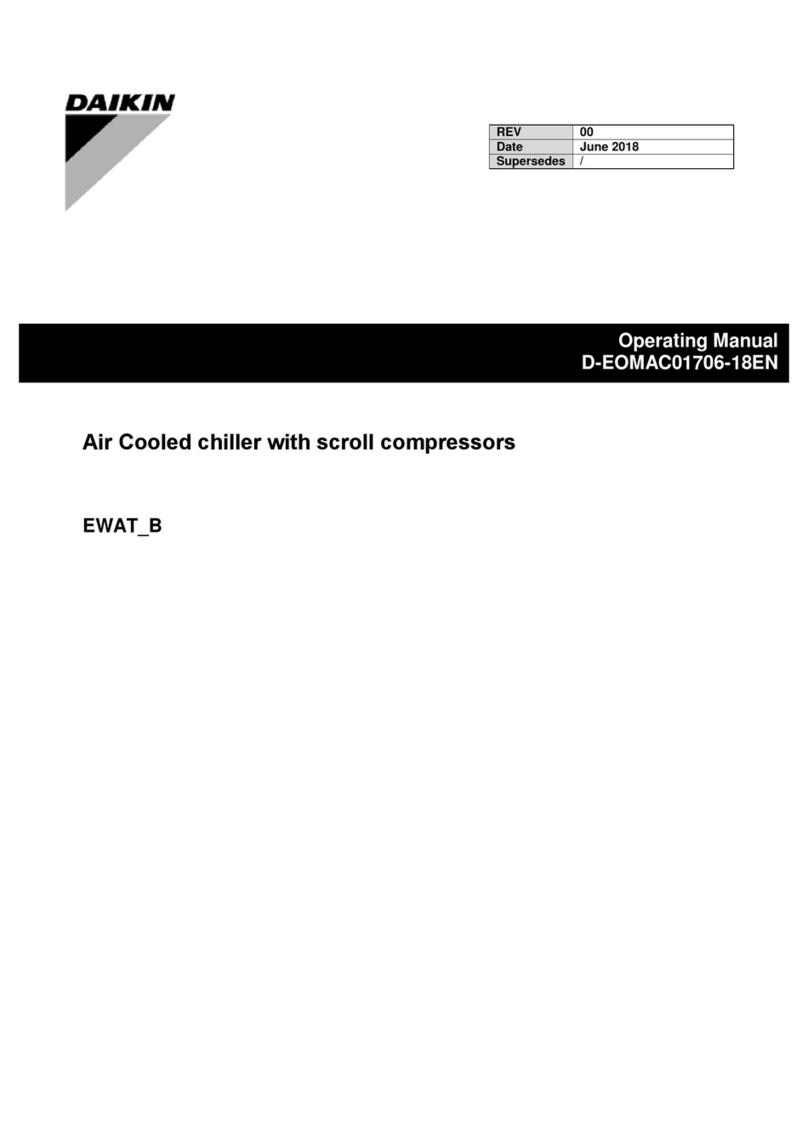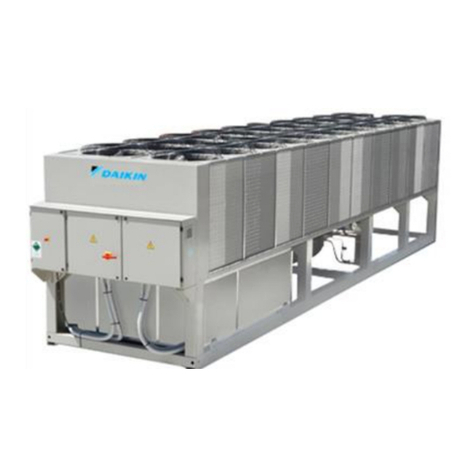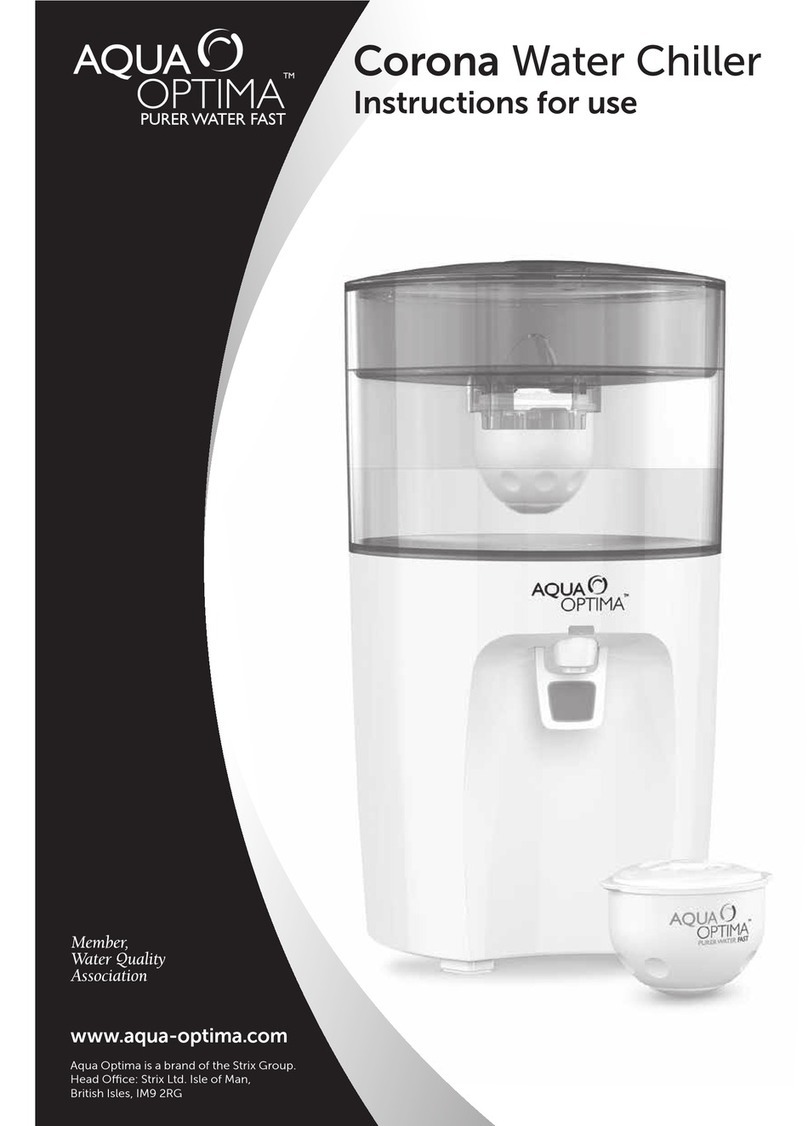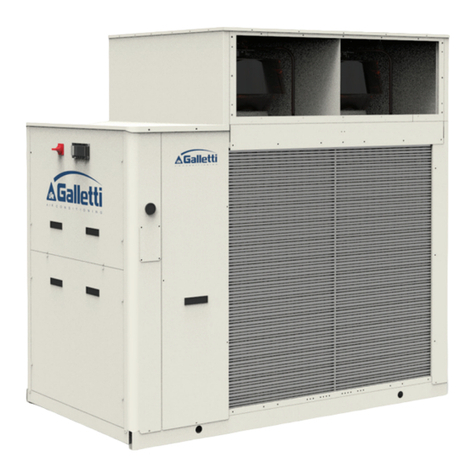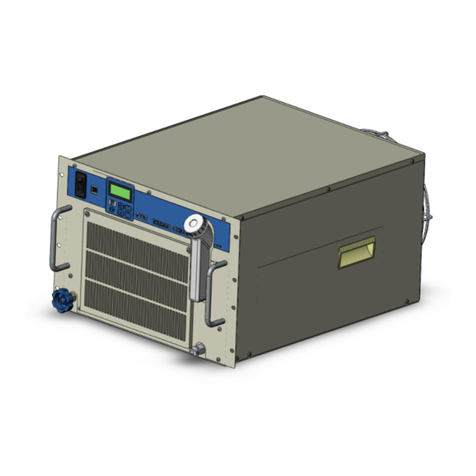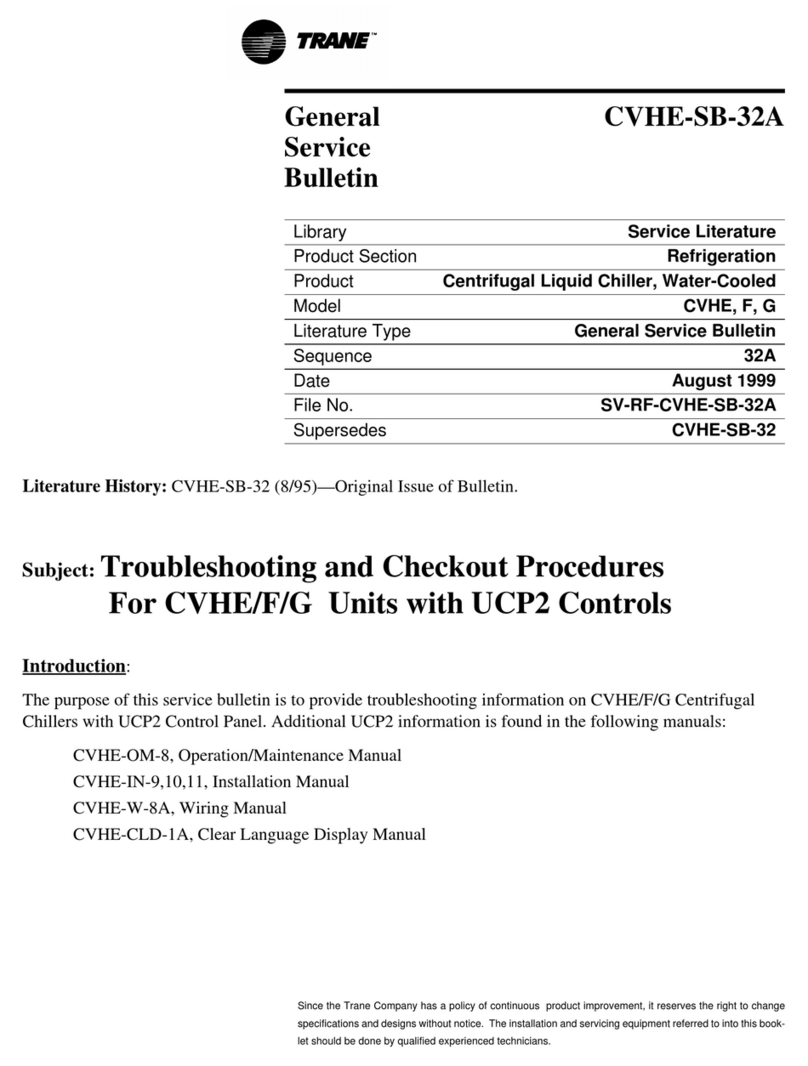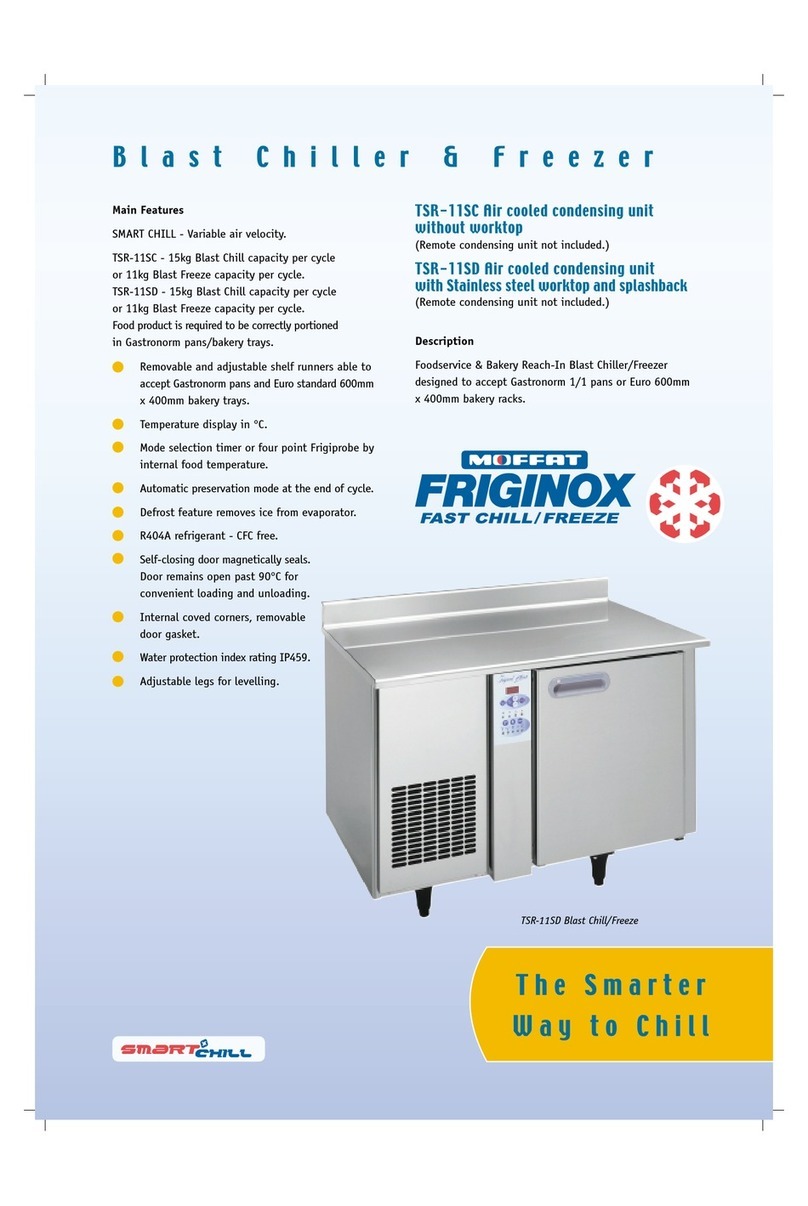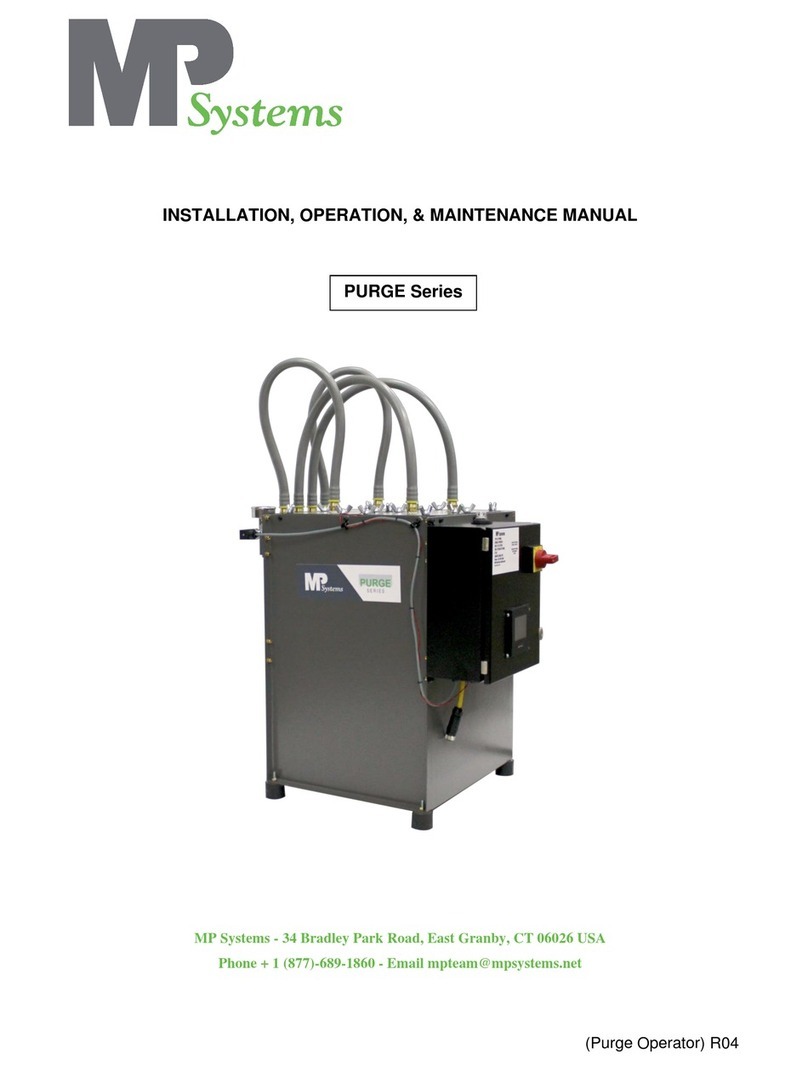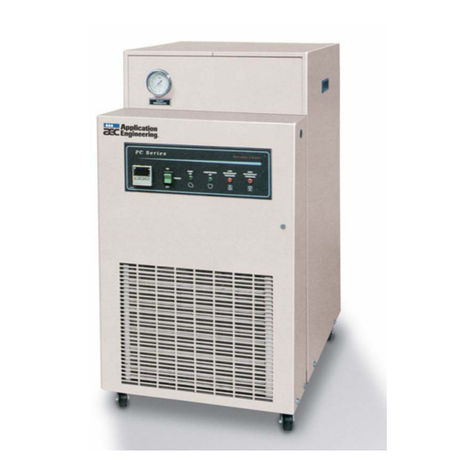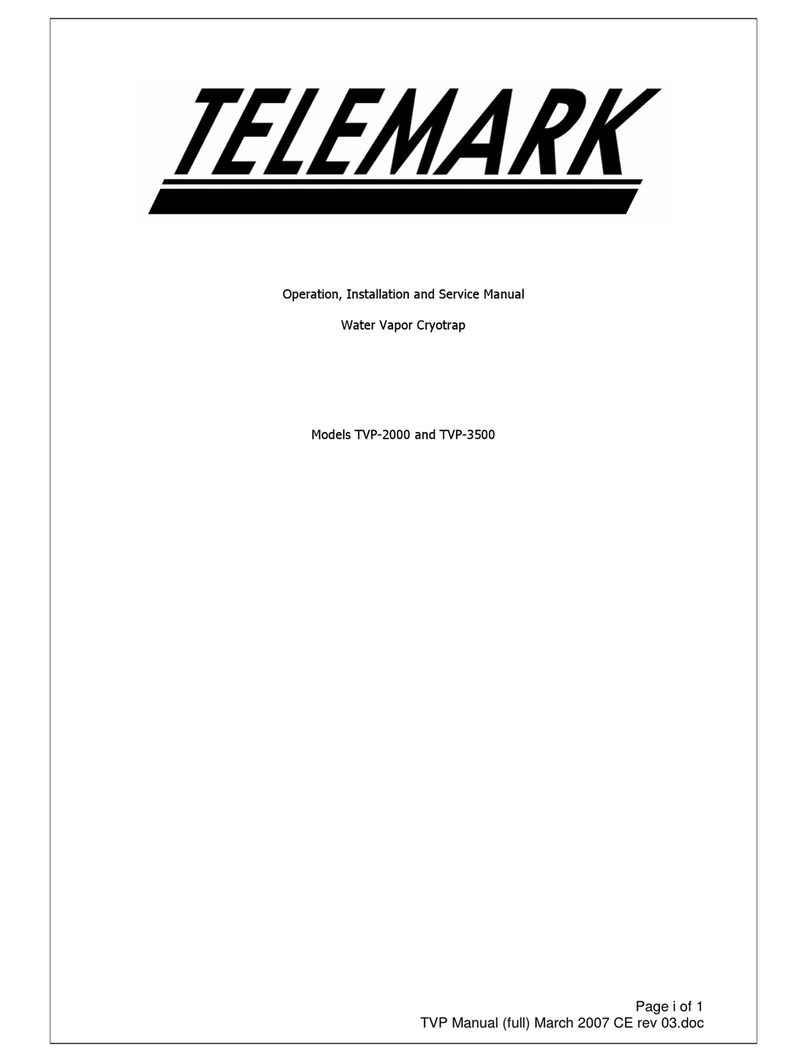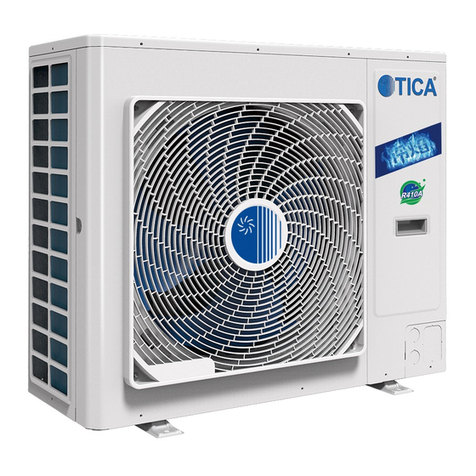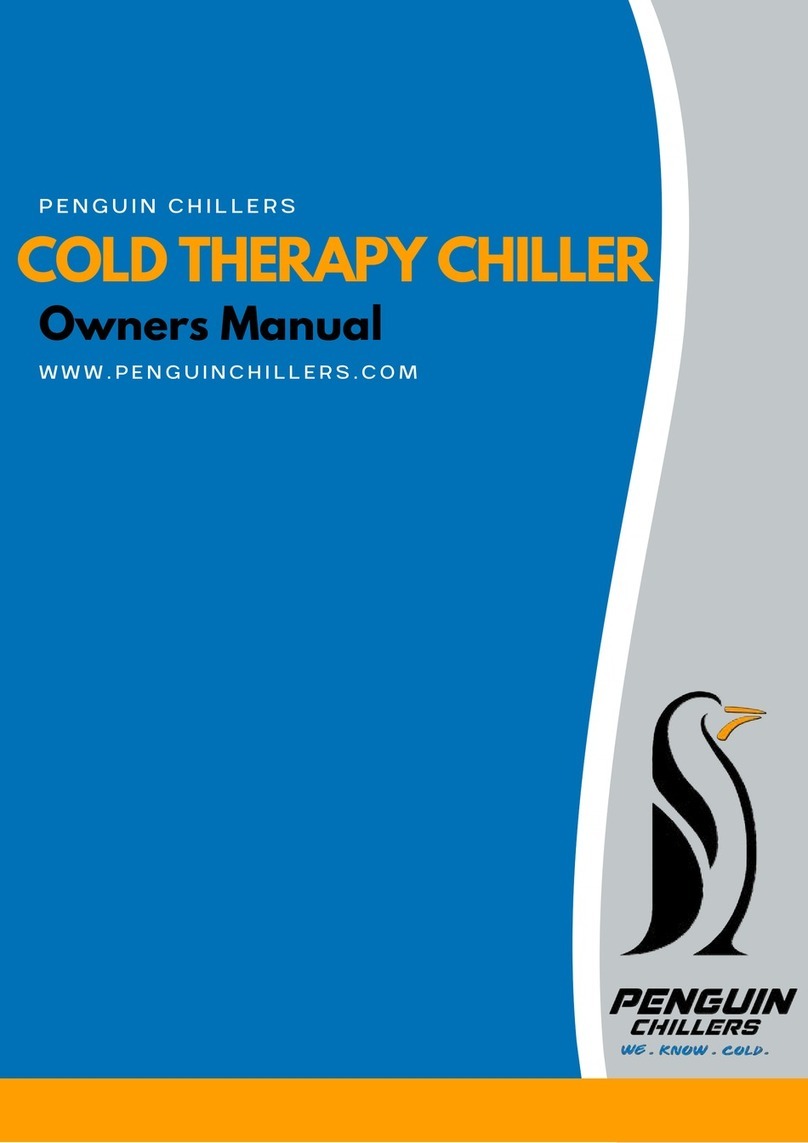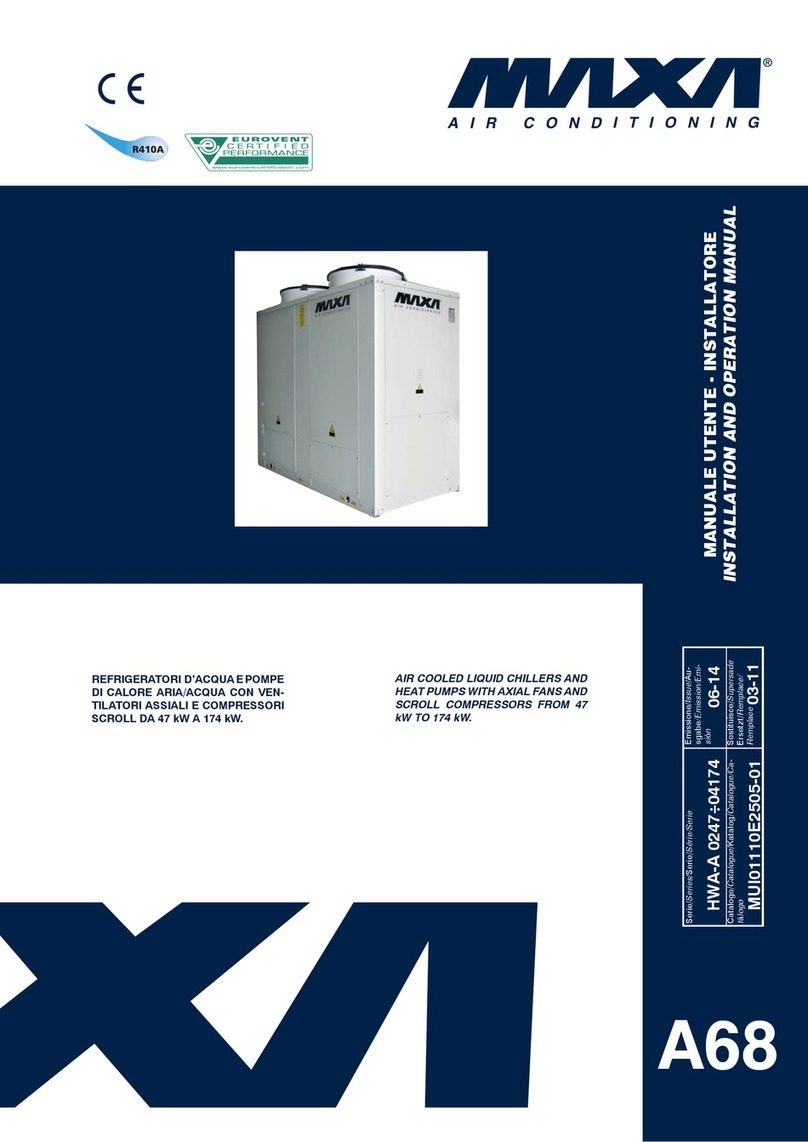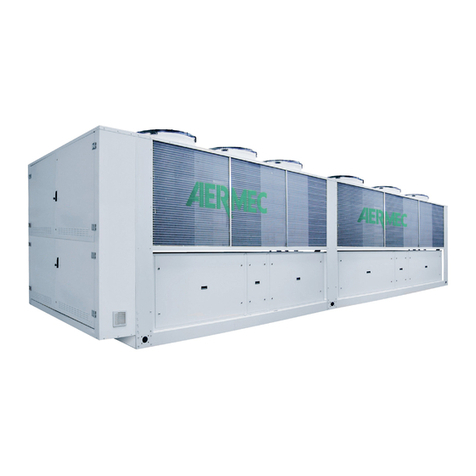
D-EIMWC01308-16EN - 10/40
Location and Mounting
The unit must be mounted on a concrete or steel base which is level end-to-end to within ¼” (6.4 mm) and must
be located to provide service clearance at one end of the unit for possible removal and replacement of evaporator
and/or condenser tubes, and if necessary, to permit brush cleaning of evaporator and condenser tubes as
required. Doors, removable wall sections and piping should be arranged for ease of disassembly at the chiller for
tube clearance and cleaning. Minimum clearance at all other points, including the top, is 3 feet (1 meter). Local
regulation can require more clearance in and around electrical components and must be checked. These chillers
are intended only for installation in an indoor or weather protected area consistent with the NEMA 1 rating on
the chiller, controls, and electrical panels. Equipment room temperature for operating and standby conditions is
40°F to 104°F (4.4°C to 40°C) for storage at higher temperatures refrigerant may need to be removed.
Vibration Pads
The unit is shipped with neoprene vibration pads having a nominal 0.375 inch (9.5 mm) operating height. They
are to be placed under the steel foot supports for contact with the foundation, and to be flush with the sides and
outside edge of the foot supports affixed to the chiller tube sheets.
Mounting
Make sure that the floor or structural support is adequate to support the full operating weight of the complete
unit.
The pads should be located in accordance with the unit dimensional drawing. After the pads have been placed
into position on the floor, lower the unit onto the pads which are to be centered under the foot supports. When
the unit is in place, remove the rigging equipment and check that the chiller is level, both longitudinally and
transversely.
First, check the longitudinal alignment of the unit by placing a “level gage” at top center of the evaporator shell
which has more compressor/motor load. Second, check the transverse alignment by placing a level gage on top
of the tube sheets at both ends of the unit. Their alignment should be within ¼”(6.4 mm) and if not, lift the unit
and place shims between the neoprene pads and the foot supports.
It is not necessary to bolt the unit to the mounting slab but should this be desirable, 1-1/8" (28.5 mm) mounting
holes are provided in the unit feet. See dimension drawing for location.
Each pad deflection is around 0.06 inch (2 mm) and if necessary, shims should be placed between the unit foot
supports and pads to equally deflect all pads.
Units will be shipped with holding refrigerant charge and oil. All valves must remain open
until start-up by the authorized commissioning technician.
